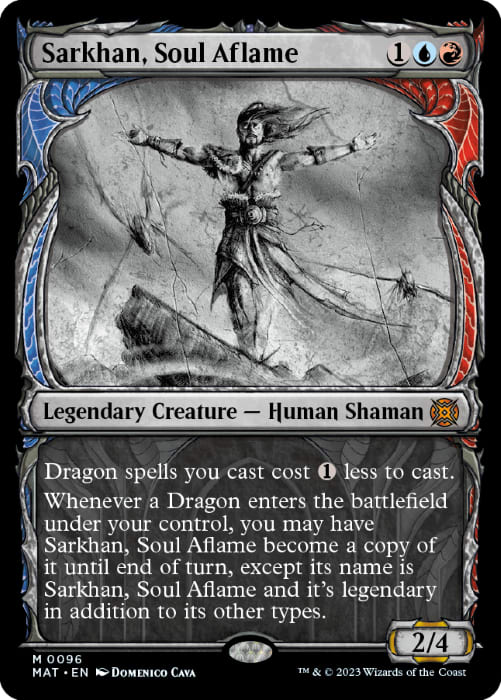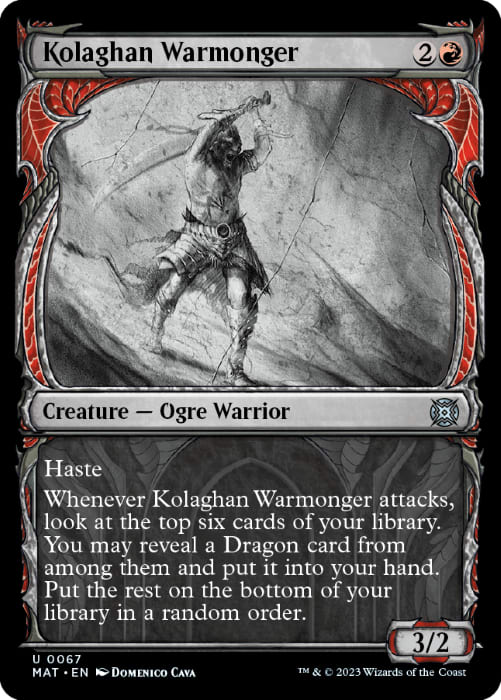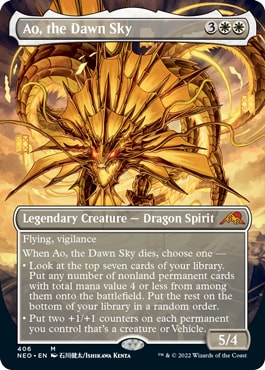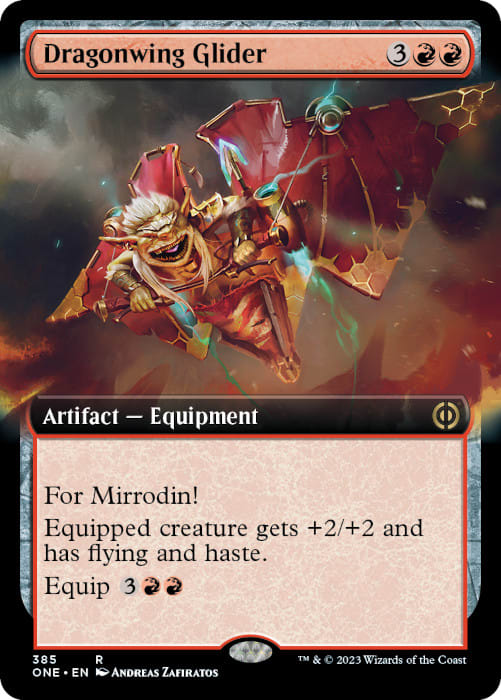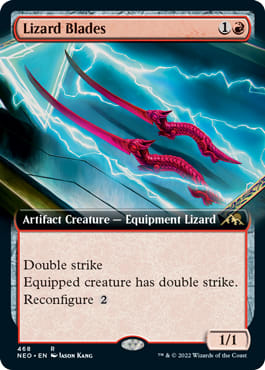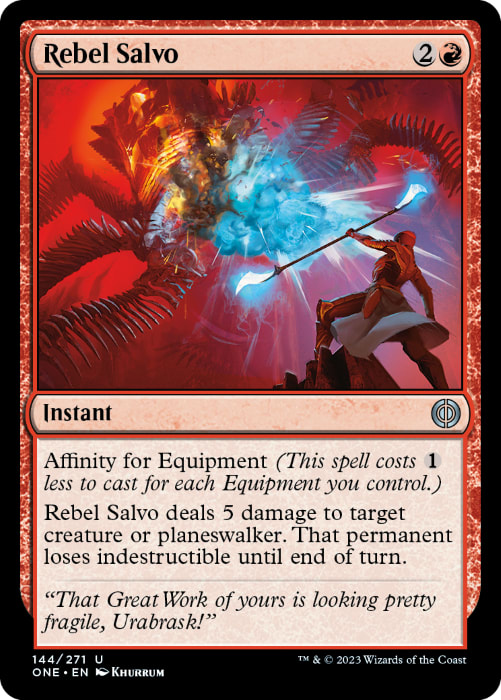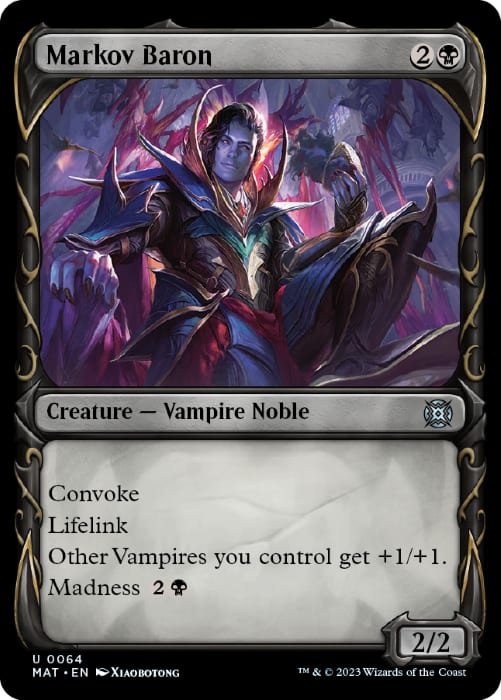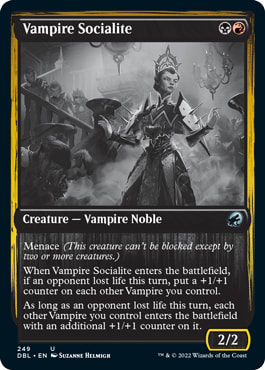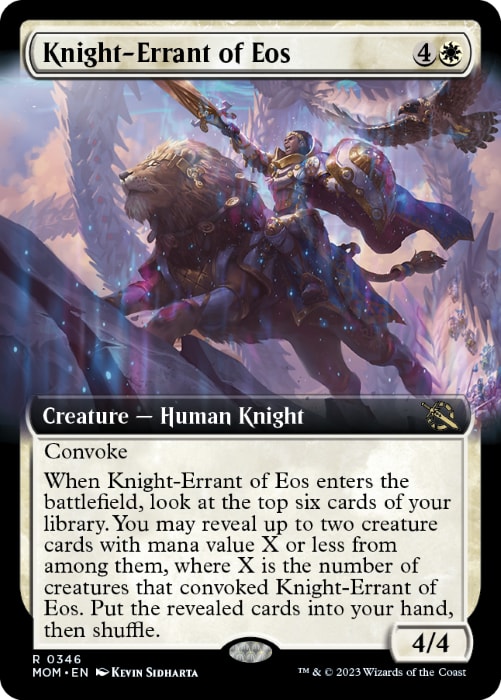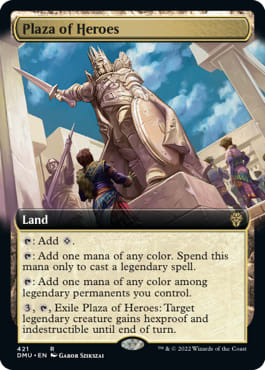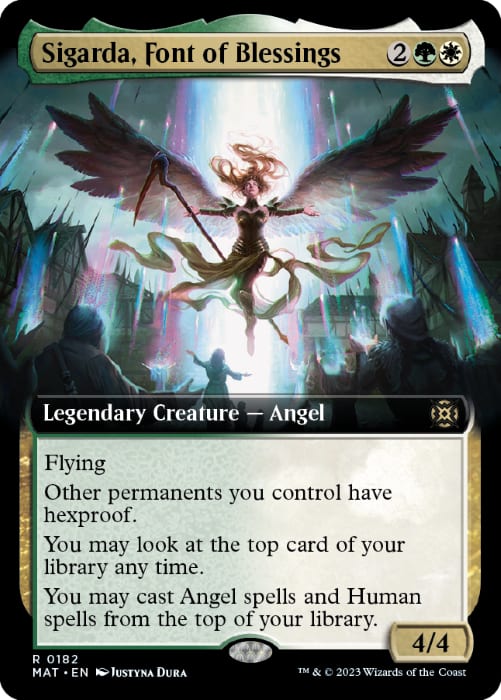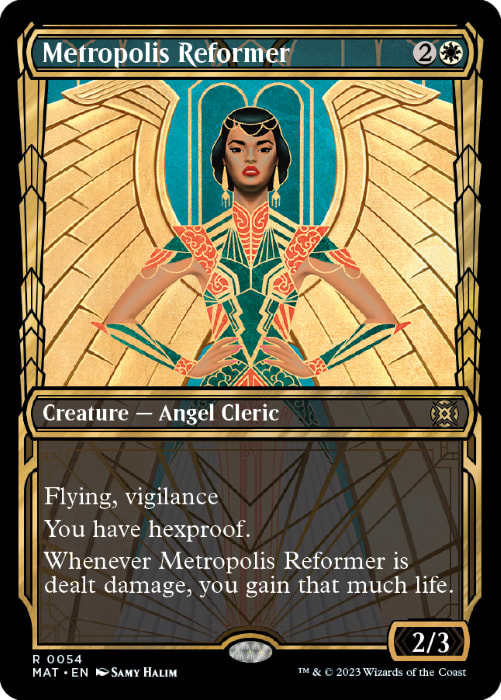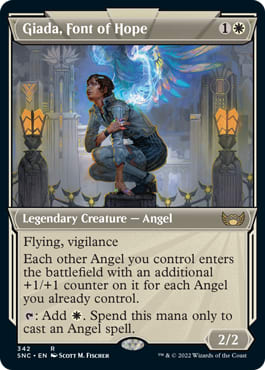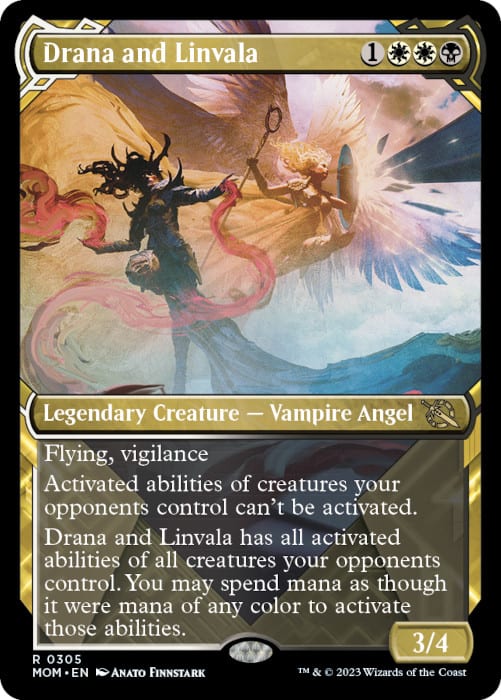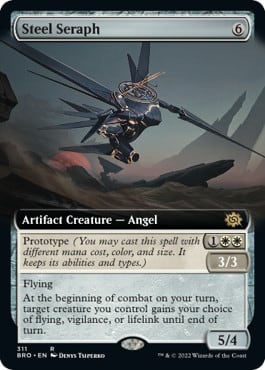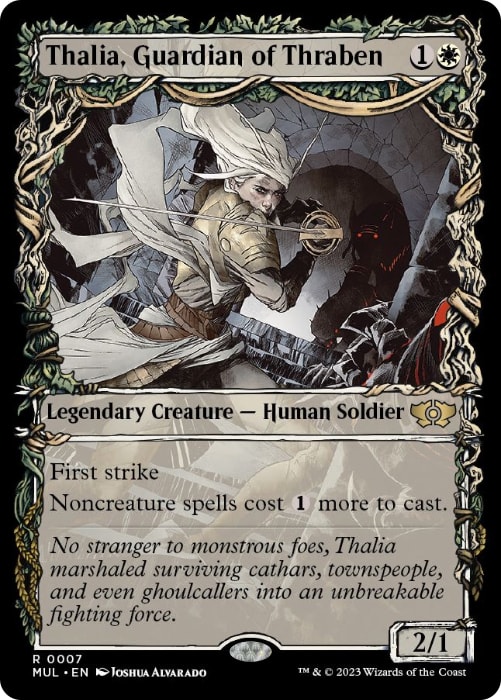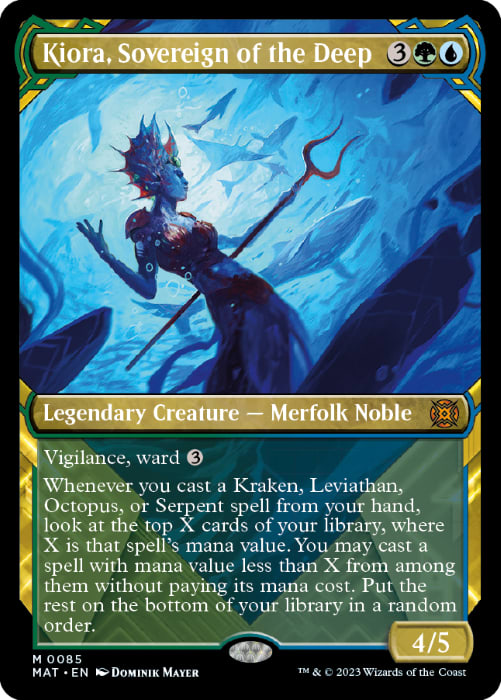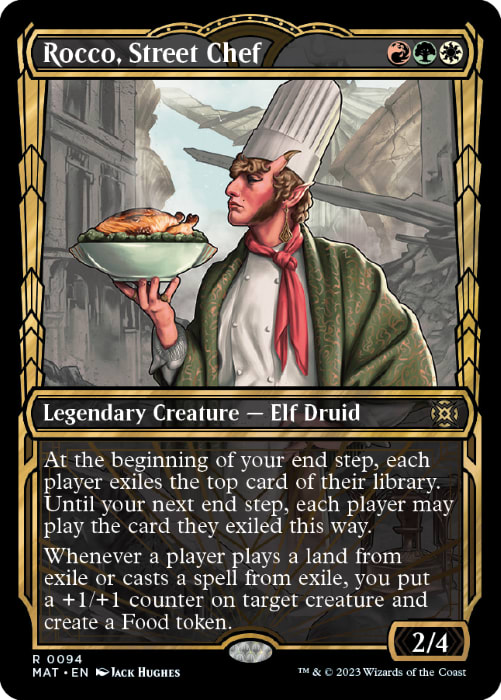Warning!
The decks you are about to see are mostly untested first drafts! They were played Wednesday on stream and are my first stabs at the new March of the Machine: The Aftermath Standard format. Most are brews jam packed with March of the Machine: The Aftermath cards, while there are also a few updates to previously established archetypes, but it's important to note that these are the first steps and not finished products! Use them as stepping stones for your own deck brewing process, but play them card for card at your own risk!
March of the Machine: The Aftermath is a very odd set.
The first of its kind in paper Magic, The Aftermath is a 50 card "micro" set full of a wide variety of mechanics and designs that's intent is to epilogue the story events of March of the Machine. However, unlike other more casual or Commander-focused supplemental releases, it is a Standard designed and legal set! In a lot of ways, The Aftermath feels like a MTG Arena Alchemy or Anthology release, injecting a small but impactful number of new cards into a current, rotating format.
Without the usual commons designed for limited, the set is only uncommons, rares, and Mythics, meaning it has a higher density of cards that will have an impact in Constructed. How much of an impact? Let's find out!
Today we are going to go over all five decks I played as part of my Five New Brews on YouTube and stream, briefly going over each list and my thoughts on how it was, giving it a letter grade, and talking about what kind of potential it has going forward. I played three matches with each deck in best of three so the deck's record will also be included, but do note that these matches were played on the open ladder not during the Early Access event. There are only five decks instead of the usual ten because this is a smaller set release.
Let's go!
Gentleman, Behold! | MAT Standard | Jim Davis
- Creatures (20)
- 1 Tyrant of Kher Ridges
- 3 Ao, the Dawn Sky
- 3 Atsushi, the Blazing Sky
- 3 Kolaghan Warmonger
- 3 Moonveil Regent
- 3 Zurgo and Ojutai
- 4 Sarkhan, Soul Aflame
- Instants (2)
- 2 Fateful Absence
- Enchantments (8)
- 4 Fable of the Mirror-Breaker // Reflection of Kiki-Jiki
- 4 Ossification
- Battles (4)
- 4 Invasion of Tarkir // Defiant Thundermaw
- Lands (26)
- 1 Island
- 2 Plains
- 5 Mountain
- 2 Battlefield Forge
- 4 Deserted Beach
- 4 Evolving Wilds
- 4 Plaza of Heroes
- 4 Stormcarved Coast
Deck's Record: 1-2
Deck's Grade: B
Deck Potential: Medium
Standout Card: Sarkhan, Soul Aflame
Our first deck is a classic sort of midrange deck, using early removal spells to keep the board clear and transition the game into powerful plays on turns 4-6.
Two new dragon 3-drops bring the room together, helping to bridge the gap to the big powerful midgame dragons and both were quite impressive. Sarkhan, Soul Aflame is a great defensive body that doesn't die to Cut Down, ramps you into your five mana dragons, and is also is an impressive threat in and of itself. Curving turn three Sarkhan into turn four Zurgo and Ojutai, attacking for eight, and drawing two good cards was excellent and happened multiple times. Kolaghan Warmonger fills a similar role to Corpse Appraiser in Grixis, attacking and blocking early while drawing cards with less setup.
Invasion of Tarkir // Defiant Thundermaw rounds out the dragon subtheme, providing removal early and a threat later, while there's also just a ton of incidentally great dragons in the format. You aren't making many deck-building sacrifices to support dragons in Standard right now, the cards are all mostly just very good. White is also the second-best removal color at the moment after Black, and getting to utilize Ossification is excellent.
Unfortunately, we played against three Control and Ramp decks in a row, and these sorts of midrange decks do historically struggle against decks full of sweepers and playing huge endgame cards, but there's definitely something exciting here. I think also that while Fable of the Mirror-Breaker // Reflection of Kiki-Jiki is obviously excellent in this deck, this would be a great place to go if it was banned because there are two other great three-drops to bridge the gap.
Affinity Fool | MAT Standard | Jim Davis
- Creatures (14)
- 2 Astor, Bearer of Blades
- 4 Lizard Blades
- 4 Nahiri, Forged in Fury
- 4 Rabbit Battery
- Instants (4)
- 4 Rebel Salvo
- Artifacts (19)
- 2 Dragonwing Glider
- 2 Eater of Virtue
- 3 Beamtown Beatstick
- 4 Barbed Batterfist
- 4 Bladehold War-Whip
- 4 Hexgold Halberd
Deck's Record: 3-0
Deck's Grade: B-
Deck Potential: Medium
Standout Card: Nahiri, Forged in Fury
How's the old saying go, fool me a dozen times shame on me?
"Boros equipment matters" has been a failed theme so many times now it's pretty much a running joke at this point, so why would this set be any different?
Well, Nahiri, Forged in Fury is actually pretty good.
Nahiri acts as a sort of cross between Winota, Joiner of Forces and Myr Enforcer, providing a large and cheap threat that can provide a huge immediate impact to the board, but unfortunately requires you to play a whole bunch of equipment in your deck. You obviously want to cast her for cheap, but more importantly you want to be able to play the spells you hit off of her for free.
Well, there is actually a pair of good equipment mechanics currently in Standard that do make it much easier to hit the critical mass of equipment necessary to pull this off. The For Mirrodin! equipment from All Will Be One does a great job at giving you an equipment and an already equipped creature all in one, allowing you to easily curve into Nahiri on turn four or five without much effort, while the Reconfigure creatures that actually are equipment also help keep that count up too.
We did go 3-0 in this set of matches, but it was definitely a soft 3-0 as our opponents could have played better in multiple spots. Nahiri was very impressive, but I fear that the overall card quality of the deck might just be too low.
Except for Rebel Salvo, as that card was everything as advertised and more!
Tap Dancing Vampires | MAT Standard | Jim Davis
- Creatures (34)
- 1 Florian, Voldaren Scion
- 2 Edgar, Charmed Groom // Edgar Markov's Coffin
- 3 Knight-Errant of Eos
- 4 Bloodtithe Harvester
- 4 Dusk Legion Duelist
- 4 Falkenrath Pit Fighter
- 4 Markov Baron
- 4 Vampire Socialite
- 4 Voldaren Epicure
- 4 Voldaren Thrillseeker
- Instants (3)
- 1 Go for the Throat
- 2 Pile On
- Lands (23)
- 1 Mountain
- 1 Haunted Ridge
- 1 Takenuma, Abandoned Mire
- 2 Battlefield Forge
- 2 Caves of Koilos
- 2 Shattered Sanctum
- 2 Sulfurous Springs
- 2 Sundown Pass
- 2 Voldaren Estate
- 4 Blackcleave Cliffs
- 4 Secluded Courtyard
- Sideboard (15)
- 4 Duress
- 3 Go for the Throat
- 3 Vampires' Vengeance
- 2 Extraction Specialist
- 2 Unlicensed Hearse
- 1 Surge of Salvation
Deck's Record: 3-0
Deck's Grade: A-
Deck Potential: Surprisingly High
Standout Card: Markov Baron, Knight-Errant of Eos
At first glance, Markov Baron looks like a somewhat underwhelming lord.
Three mana for a 2/2 lord with lifelink is barely passable in limited, but oh boy is this card a reminder of how excellent Convoke and Madness are. Convoke is obviously a very powerful mechanic for creature decks, allowing you discounts on your cards and giving you the ability to flood the board as needed and really power things out. Madness is also an excellent ability, especially in the tribe that makes Blood tokens, as if you discard a madness card to a Blood token, draw a card, and then cast it with madness, you've essentially turned your card into a cantrip.
However, what I didn't realize until I actually started playing the deck was that you can Convoke and Madness at the same time!
This means if you say go with a single mana and a Blood token up, you can sacrifice the Blood to discard Markov Baron and draw, and then just tap your creatures to cast it as a combat trick or a surprise boost at the end of your opponent's turn. Under ideal circumstances, that's effectively one-mana for a lord that draws a card!
Add in a small +1/+1 counter theme with Dusk Legion Duelist, the very powerful Vampire Socialite, and the still-pretty-new Voldaren Thrillseeker and you've got a great way to draw some cards, pump the team, and have some late game reach/removal when needed.
Topping it all off was the excellent Knight-Errant of Eos, which is just an incredible way for any creature heavy deck to reload as well as play a sizable threat that doesn't die to Brotherhood's End.
This deck played surprisingly well, as is another deck that will gain a ton if Fable of the Mirror-Breaker // Reflection of Kiki-Jiki is banned. It's got a fast clock, explosive potential, but also the ability to go longer and grind if needed, as well as access to all the best removal spells in the format.
Before & After | MAT Standard | Jim Davis
- Creatures (20)
- 1 Glissa, Herald of Predation
- 1 Titan of Industry
- 2 Polukranos Reborn // Polukranos, Engine of Ruin
- 4 Armored Scrapgorger
- 4 Llanowar Loamspeaker
- 4 Nissa, Resurgent Animist
- 4 Topiary Stomper
- Planeswalkers (4)
- 4 Nissa, Ascended Animist
- Instants (3)
- 3 Go for the Throat
- Sorceries (4)
- 4 Awaken the Woods
- Battles (4)
- 4 Invasion of Zendikar // Awakened Skyclave
- Lands (25)
- 1 Swamp
- 15 Forest
- 1 Boseiju, Who Endures
- 4 Deathcap Glade
- 4 Riveteers Overlook
Deck's Record: 2-1
Deck's Grade: C+
Deck Potential: Medium
Standout Card: Nissa, Resurgent Animist
This deck was basically a proof of concept for the idea that "Nissa, Resurgent Animist is a good Magic card."
Nissa has already been making the rounds in Modern as a super Lotus Cobra in the elemental decks, cracking fetchlands to make two extra mana and draw another Solitude, but can it do the same in Standard?
Riveteers Overlook gives you that same sort of fetchland feel, while natural ramp like Topiary Stomper and Invasion of Zendikar // Awakened Skyclave also can help you get that second land drop for a double trigger. In a lot of ways this makes Nissa resemble Omnath, Locus of Creation, which is a pretty good card to be compared to.
The goal of this deck was to use the ramp shell to help power out Awaken the Woods, preferably with Nissa, Resurgent Animist in play for some mega triggers, and set up for a seven-mana immediate-ultimate Nissa, Ascended Animist for a one-shot Craterhoof-style combo kill.
This sorta worked, as the ramp spells are good, and both Nissas were pretty good as well, but it did feel like it was missing something. The Black splash was a huge help, but in a format where you can ramp into Atraxa, Grand Unifier and Etali, Primal Conqueror // Etali, Primal Sickness, there's a lot of competition.
Angel Splash | MAT Standard | Jim Davis
- Creatures (30)
- 2 Dennick, Pious Apprentice // Dennick, Pious Apparition
- 2 Drana and Linvala
- 2 Liesa, Forgotten Archangel
- 3 Errant and Giada
- 3 Metropolis Reformer
- 3 Sigarda, Font of Blessings
- 3 Steel Seraph
- 4 Giada, Font of Hope
- 4 Skrelv, Defector Mite
- 4 Thalia, Guardian of Thraben
- Sorceries (4)
- 4 Lay Down Arms
Deck's Record: 1-2
Deck's Grade: C-
Deck Potential: Low
Standout Card: Sigarda, Font of Blessings
Between Plaza of Heroes and Secluded Courtyard, if you're playing a lot of legendary creatures of the same type in Standard you can do some pretty wild stuff with your mana base.
Both lands are painless and enter the battlefield untapped, making for some really smooth mana. We've seen lots of five color human decks in the format, but The Aftermath gives us a few new interesting Angels that make it a tribe worth exploring.
Sigarda, Font of Blessings is a pretty big pickup, providing a very large body, protection for your team, but most importantly the ability to play both humans and angels off of the top of your deck with no limit. One of the things that angel decks tend to lack is this sort of card velocity, as the cards are of10 powerful but lacking in a way to propagate - this is why Collected Company is so important to the older versions of these decks. But with both Sigarda as well as Errant and Giada, the deck has the ability to produce extra cards at a pretty good clip.
Add this to an already solid roster of playable angels in the format, led by Giada, Font of Hope proper, and it looks like you've got the start to a pretty good aggressive tribal deck with some big top end.
Unfortunately, the problems here were two-fold.
Trying to play the sort of Esper Legends-style curves leading on Skrelv, Deflector Mite into Thalia, Guardian of Thraben just weren't that impressive, making the deck feel like a worse Esper Legends because you had to play so many creatures. Furthermore, while the deck did have an impressive 17 Plains, it still wasn't really enough to support Lay Down Arms, the only removal spell that actively plays well alongside Thalia.
There may be some way to make Sigarda work in Standard, but it would need to look radically different than this to work.
So, What To Make Of The Aftermath?
Honestly? It's a pretty bizarre set.
Many of the cards just read like Commander product cards, which was a similar issue with March of the Machine where you look at a card like Borborygmos and Fblthp and you ask yourself "what am I supposed to even do with this card in a 60 card format?" However, while March of the Machine did have a bunch of fun Constructed cards in it, as well as an all-time great draft format, March of the Machine: The Aftermath doesn't have the draft component and just feels somewhat tacked on.
Without Limited, what am I ever supposed to do with a card that's the power level of Harnessed Snubhorn? It's a cool card, but obviously never going to make it in Constructed. And then there's a "bash you over the head" Commander cards that are just so obviously only made for Commander it's painful.
These sorts of smaller drops seem to work well on MTG Arena because of how easy and fast it is to get cards, as well as the sheer volume of games being played making extra content desirable. But in paper? I'm not sure, but it just feels kinda off.
Either way, some of the cards are definitely fun and I had a blast playing all five of these decks, so there's always that!
















